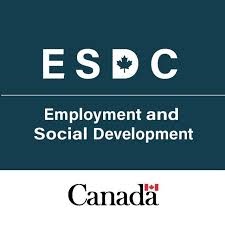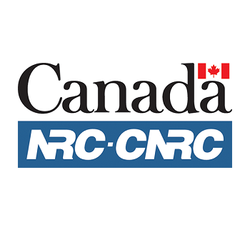
Open
EI Premium Reduction Program
Last Update: October 27, 2025
Canada
Money for employers
Grant and Funding
At a glance
Funding available
Financing goals
No objectives are currently available
Eligible Funding
- No Condition
Timeline
- Open Date : September 22, 2020
Eligible candidates
Eligible Industries
- All industries
Location
- Canada
Legal structures
- Financial cooperative
- Non-profit
- Public or Parapublic institution
- For-profit business
- Sole proprietorship
- Social economy enterprise
- Non-financial cooperative
Annual revenue
- All revenue ranges
Organisation size
- All organization sizes
Audience
- All groups
Non-profit candidates
Sector of operation
- Employment and Training
Target group
- Business owners / entrepreneurs
Revenue structure
- All structures
Scope
- Provincial
- National
Overview
You could get a premium reduction in the short-term disability benefits you pay to your insured employees.
Activities funded
Examples of admissible projects:
$ 20,000
Implementing a short-term disability plan for a new software development startup
$ 20,500
Implementing a short-term disability plan at a social economy enterprise
$ 25,000
Introducing a new short-term disability plan for employees at a legal firm
$ 25,000
Introducing a short-term disability program at a financial cooperative
$ 25,000
Implementing a new short-term disability plan for employees at a local manufacturing company
$ 20,000
Establishing a comprehensive short-term disability plan for employees at a non-profit organization
Eligibility
Eligibility for the EI Premium Reduction Program requires that the employer-provided short-term disability plan meets specific criteria.
- The plan must provide at least 15 weeks of benefits for short-term disability.
- The benefits provided by the plan must match or exceed those offered under EI regulations.
- Benefits must be disbursed to employees within 8 days of illness or injury, with an elimination period not exceeding 7 consecutive days.
- Employees must have access to the plan within 3 months of their hiring date.
- The plan must cover employees on a 24-hour-a-day basis.
- The employer must provide evidence of commitment to the short-term disability plan.
- The employer must undertake to return five-twelfths of the savings from the premium reduction to employees covered by the plan.
Who is eligible?
Employers who have insured employees covered by a short-term disability plan may apply. Insured employees are those on whose behalf an employer remits EI premiums to the Canada Revenue Agency (CRA).Selection criteria
The evaluation and selection criteria for the EI Premium Reduction Program are based on the short-term disability plan provided by the employer and whether it meets specific requirements. Employers must ensure their plans meet the minimum criteria to qualify for a premium reduction.
- Provide at least 15 weeks of benefits for short-term disability
- Match or exceed the level of benefits provided under EI
- Pay benefit to employees within 8 days of illness or injury (the elimination period cannot exceed 7 consecutive days)
- Be accessible to employees within 3 months of hiring
- Cover employees on a 24-hour-a-day basis
How to apply
1
Verify Eligibility
Ensure your short-term disability plan meets all the basic requirements laid out in the program guide.
2
Prepare Required Documentation
- Prepare a copy of the short-term disability plan(s) you provide to employees.
- Gather any applicable collective agreement(s) related to employees covered by the plan.
- If available, prepare a written mutual agreement regarding the return of the employees' portion of the reduction.
3
Complete Application Form
- Access the application form for Employment Insurance Premium Reduction (NAS5022).
- Fill out the form with accurate details about your organization and the short-term disability plan.
4
Submit Application
- Submit the completed application form and all required documents to the Service Canada office handling EI Premium Reduction.
- Ensure any missing documentation is provided within 30 days if requested by Service Canada.
5
Await Decision
- Await written notification from Service Canada regarding the outcome of your application.
- If approved, receive the reduced EI premium rate and recalculate your payroll as necessary.
6
Address Any Issues
If not approved, carefully review the reasons provided and consider resubmitting with modifications, or appeal if necessary.
Additional information
Here are additional relevant details for this grant:
- The Premium Reduction Program requires employers to refund five-twelfths of the savings to the employees covered by their plan.
- Employers must maintain sufficient documentation proving the eligibility of their short-term disability plans and must be prepared to submit additional documentation upon request within 30 days.
- If granted a reduction, employers might need to adjust their financial calculations retroactively from January 1 of the calendar year in which the reduction applies.
- A written appeal can be submitted within one year if the employer disagrees with a non-entitlement decision.
- Employers must notify the program of changes to their short-term disability plan, address, payroll deductions account, ownership or organizational structure.
Apply to this program
Frequently Asked Questions about the EI Premium Reduction Program Program
Here are answers to the most common questions about the EI Premium Reduction Program. This section explains what the program is, how much funding is available, eligibility requirements, application deadlines, and other important details to help you determine if this grant is right for your business.
What is the EI Premium Reduction Program?
How much funding can be received?
What expenses are eligible under EI Premium Reduction Program?
What is the deadline to apply?
Is the EI Premium Reduction Program a grant, loan, or tax credit?
Who are the financial supporters of the EI Premium Reduction Program?
Who is eligible for the EI Premium Reduction Program program?
Who can I contact for more information about the EI Premium Reduction Program?
Where is the EI Premium Reduction Program available?
Apply to this program
More programs like this

Wage Subsidies And InternsOpenClosing Soon
Canada Summer Jobs (CSJ)
Employment and Social Development Canada (ESDC)Wage subsidies for quality summer work experiences for young Canadians aged 15 to 30

Wage Subsidies And InternsOpen
Industrial Research Assistance Program (IRAP) — Youth Employment Program (YEP)
National Research Council Canada (NRC)Money to hire a student

Researchers And FacilitiesPartnering and CollaborationWage Subsidies And InternsOpen
Mitacs Accelerate
MitacsConnect organizations with academia for research and innovation collaboration

Grant and FundingOpen
Mitacs Accelerate International
MitacsFunding to collaborate with international researchers

Grant and FundingClosed
Canada Service Corps – Service Placements Regional Stream
Employment and Social Development Canada (ESDC)Funding for organizations to develop youth volunteer service placements

Grant and FundingOpen
AgriDiversity Program
Agriculture and Agri-Food Canada (AAFC)Funding to improve diversity in the agriculture and agri-food sector

Other SupportOpen
Hire a permanent foreign worker
Refugees and Citizenship CanadaHelp to hire permanent foreign workers

Grant and FundingOpen
Humanitarian Workforce (HWF) - COVID-19 and other large-scale emergencies
Public Safety Canada (PSC)Supports NGOs in emergency response and capacity building activities

Wage Subsidies And InternsOpen
Canada Book Fund (CBF) — Support for Organizations — Internships
Canadian HeritageFinancial support for internships in the book industry

Wage Subsidies And InternsOpen
Magnet — Outcome Campus Connect
MagnetHire students for growing businesses
Sign up to our platform to access the EI Premium Reduction Program information sheet for free
Get access to 4,000+ programs, practical guides, personalized alerts, and an AI assistant to support your grant applications.